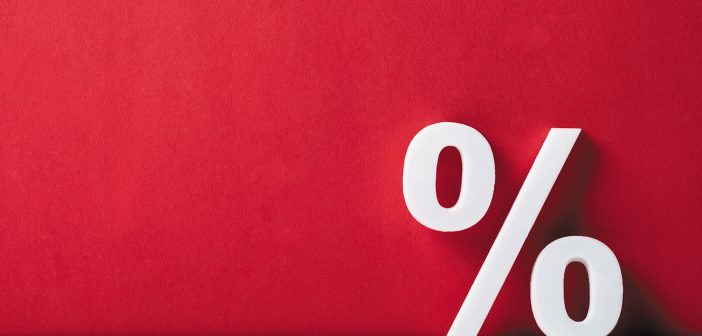A look at what the latest research says about the present and future of lodging
by TOM GRESHAM
Research into the hospitality industry offers operators a wealth of insight into the business trends driving their industry. The latest data gathered from a variety of expert sources offers reasons for optimism for the industry’s continued health in the U.S., though there’s evidence a long run of robust growth could be facing headwinds.
THE EXPANSION CYCLE CONTINUES – WITH HICCUPS
The U.S. hotel industry’s current expansion cycle reached 115 months in October 2019, according to an STR report released at the same time. The industry has only experienced three months of decline year over year in hotel revenue per available room (RevPAR) since the industry’s expansion began in March 2010. However, two of those declining months came in 2019 (June and September), suggesting possible strains. Daniel Lesser with LW Hospitality Advisors said in a U.S. lodging market update for the third quarter of 2019, “the near-time lodging outlook appears choppy as prognosticators have downgraded projected 2020 national RevPar growth.”
Overall, revenue per available room in the U.S. rose 0.7 percent year over year in the third quarter of 2019 to $94.42, according to STR. Other key performance indicators in the third-quarter report included a 0.1 percent drop in occupancy to 70.9 percent and a 0.8-percent increase in average daily rate to $133.25.
“While RevPAR increased slightly, it was the lowest year-over-year percent change in the metric since the first quarter of 2010, and the first quarter during the current cycle to show an increase in the metric below 1.0 percent,” said Bobby Bowers, STR’s senior vice president of operations, in a press release. “While demand growth slowed to 1.8 percent, the industry sold more nights than any other Q3 in history. Keeping in line with that theme, third-quarter room revenue reached $46.5 billion, the highest quarterly room revenue figure in STR’s U.S. database.”
Large municipalities enjoying strong recent performances include Phoenix, AZ, which saw the largest jump in RevPAR in the country in the third quarter – an increase of 5.3 percent to $60.57 – and Houston, TX, which experienced the highest rise in occupancy – from 4.4 percent to 62.4 percent.
When considering the five-year stretch between 2014 and 2019, Marcus & Millichap showed that RevPAR has grown 18.1 percent at resorts over that time period, the most among lodging location types. Meanwhile, the slowest growth has been at urban locations, where RevPAR growth has been 7.7 percent.
TRAVELER TRENDS
Marcus & Millichap pointed to one area where international-relations challenges appear to have affected a key component of the lodging industry in the U.S.
Chinese visitation to the country had dropped 3.1 percent through May 2019 after rising 15.8 percent annually on average between 2012 and 2018. Overall, international visitation to the U.S., which averaged 3.3 percent growth between 2012 and 2018, had declined 1.9 percent through May.
In Deloitte Consulting’s 2019 U.S. Travel and Hospitality Outlook, its experts say “competition for the lucrative international travel segment is rising – and the United States is feeling the pressure.” In contrast to sluggish returns on international arrivals into the U.S., Deloitte pointed to popular “rising star” destinations, such as Portugal and Vietnam, some of which are seeing 20-to-30-percent growth in arrivals annually. Overall, the U.S.’s “global share of long-haul travel is dropping, down to 12.2 percent in 2017 from 13.8 percent in 2015.”
In the U.S., 47 percent of all lodging was booked online in 2018, according to Phocuswright. Bookings made directly through hotels dropped from 55 percent of market share to 49 percent between 2010 and 2016, while online travel agencies grew to 51 percent of market share. However, Phocuswright research indicates that growth in online travel agency sales is projected to fall to the single digits in 2019 after a streak of double-digit growth and that hotels are regaining market share in bookings, in part through the stepped-up use of loyalty programs, and are expected to return to 50 percent of market share by 2022.
CONSTRUCTION, OPENINGS, AND TRANSACTIONS
Globally, lodging construction is proceeding at a record pace, according to Lodging Econometrics. In September, the company reported the global construction pipeline for lodging reached an all-time high of 14,051 projects, comprising more than 2.3 million rooms, representing a 9-percent increase in projects and an 8-percent rise in rooms year over year. The pipeline includes a record 6,565 projects under construction.
According to the report, which considered development in 176 countries, every global region except Latin America “either continued to set record high pipeline counts or have already settled into topping-out formations amidst concerns of a worldwide economic slowdown.” The United States leads the way with 5,653 projects (693,207 rooms) in the pipeline, falling 230 projects short of its record of 5,883 projects in the second quarter of 2008. The U.S. is responsible for 40 percent of projects in the pipeline globally, while China is second at 21 percent with 2,991 projects (592,884 rooms). Dubai is the top city worldwide (173 projects, 50,832 rooms), while New York is second (166 projects, 28,231 rooms).
Among the most-active franchise companies, Lodging Econometrics pointed to Marriott International (2,534 projects, 420,562 rooms) and Hilton Worldwide (2,334 projects, 340,626), while the top brands were InterContinental Hotel Group’s Holiday Inn Express (737 projects, 93,415 rooms) and Hampton by Hilton (689 projects, 90,634 rooms).
For openings, Lodging Econometrics reported 1,374 new hotels opened globally in the first half of 2019, representing 196,237 rooms. Another 1,675 hotels (236,334 rooms) were expected to open by the end of 2019. Lodging Econometrics projects new hotel openings of 3,168 in 2020 and 3,171 in 2021, suggesting continuing growth.
The LW Hospitality Advisors 2019 Major U.S. Hotels Sales Survey showed a sharply slowing transaction market in the third quarter of 2019 when compared to a comparable period in 2018. The survey counted 41 single-asset sale transactions over $10 million, totaling $3.725 billion, vs. 57 transactions totaling $6.4 billion a year ago. That marked a decline of 28-percent fewer trades and 42-percent less total-sales dollar volume. Transaction volume also had dropped in the first half of the year, and Marcus & Millichap pointed to economic uncertainty and market volatility being key to the stalling. Overall, the data points to an industry slowdown, a phrase we’re likely to continue hearing well into 2020. Though by looking at the numbers, there is hope for select markets. ■
2019 at a glance
- RevPAR .07%
- Occupancy .1%
- ADR .8%
- Most active franchises:
- Marriott International
2,534 projects with 420,562 rooms- Hilton Worldwide
2,334 projects with 340,626 rooms- Top brands:
- InterContinental Hotel Group’s Holiday Inn Express
737 projects with 93,415 rooms- Hampton by Hilton
689 projects with 90,634 rooms- Largest jump in RevPAR in the country – Phoenix, AZ
- Highest rise in occupancy – Houston, TX
Lodging Econometrics predicts continued growth:
- 2020: 3,168 new hotel openings
- 2021: 3,171 new hotel openings
- 47% lodging booked online in 2018
- 2010 to 2016: Direct hotel bookings dropped from 55% market share to 49%
- OTAs grew to 51%




